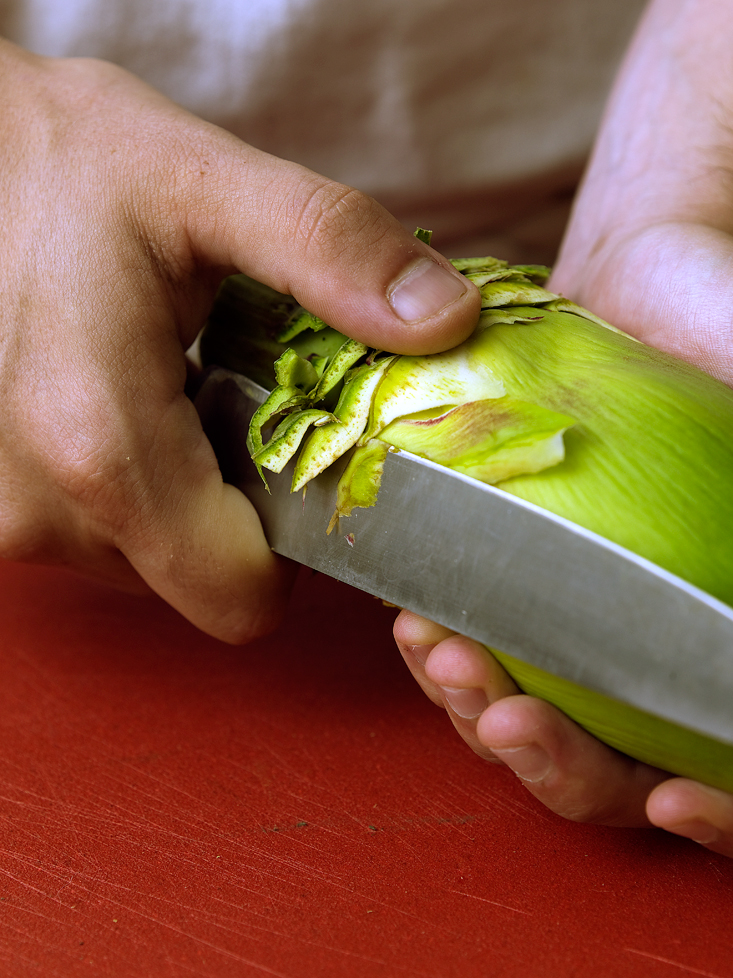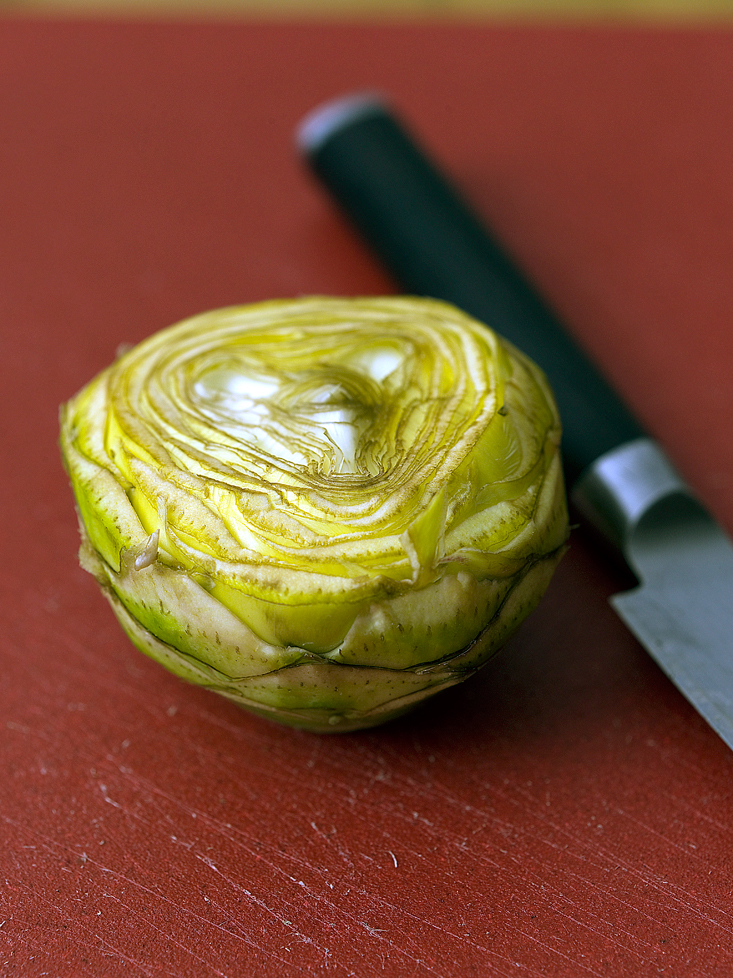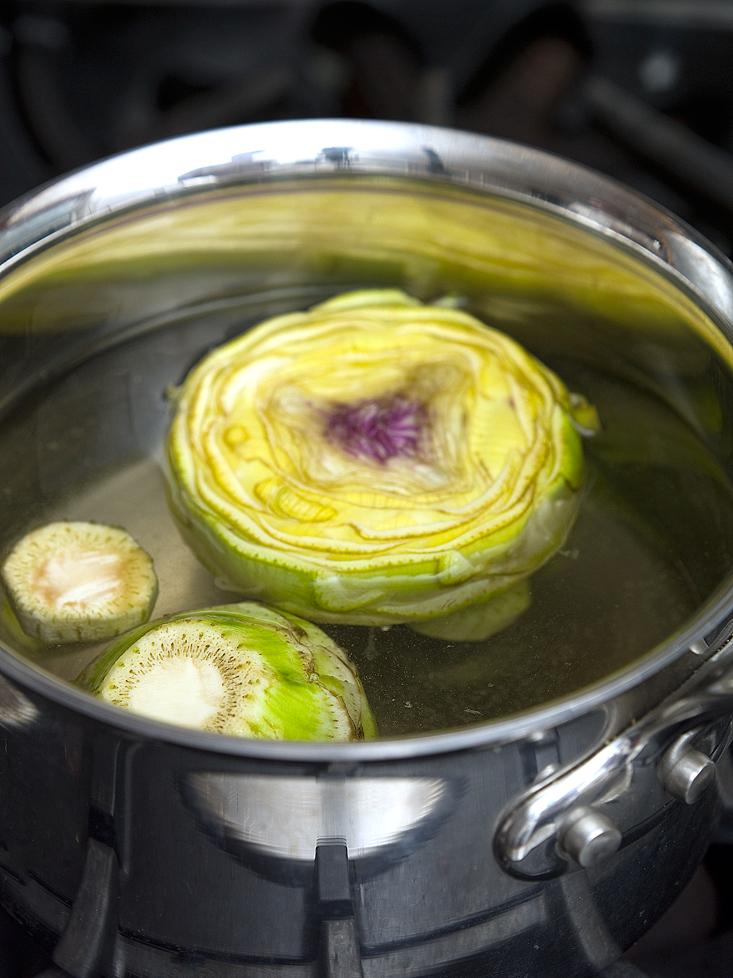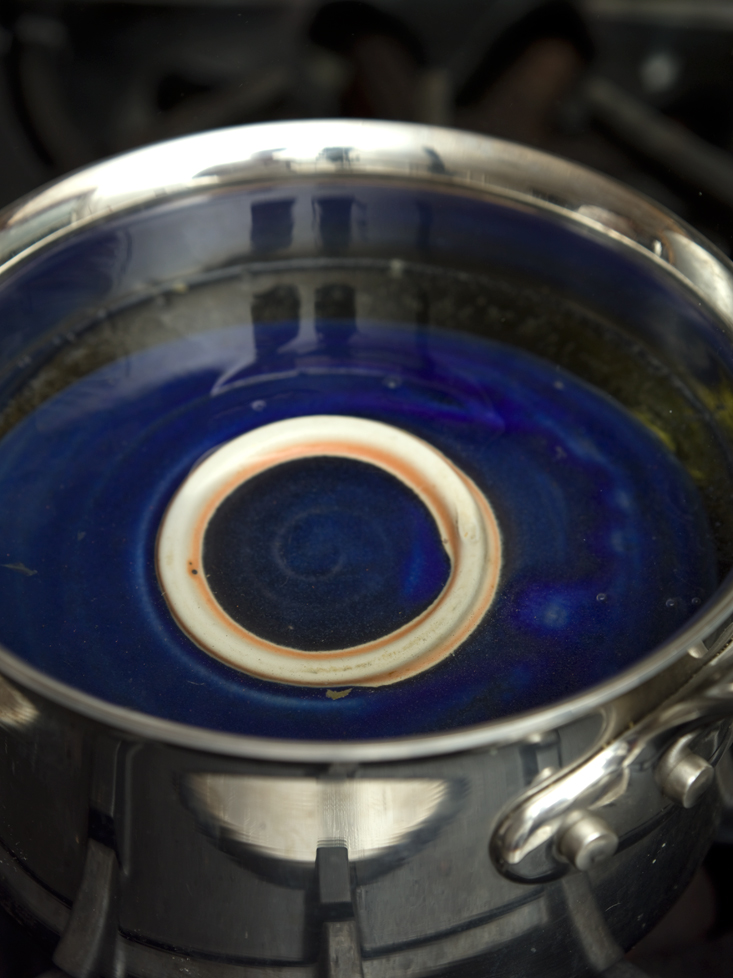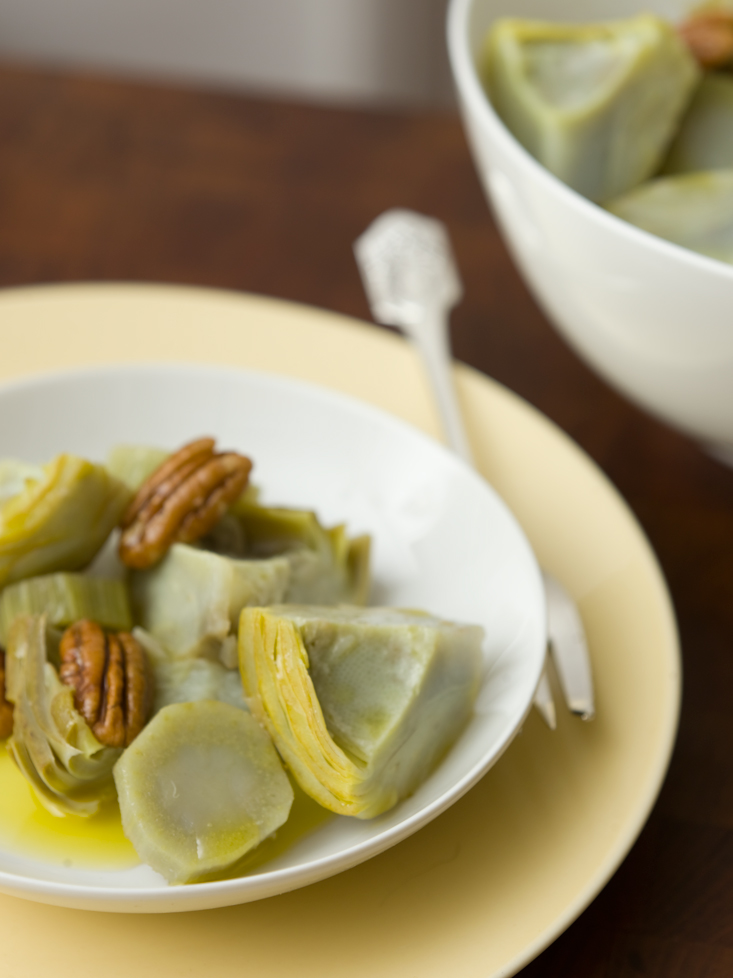I was once a maitre d’ at a restaurant in Montmartre. An American came in and ordered an artichoke vinaigrette which was duly presented with a bowl for the finished leaves. As he sat there, I realized that perhaps he didn’t know how to eat an artichoke, so I went over to his table, took a leaf of the artichoke, dipped it in the vinaigrette, slid it between my teeth and placing the finished leaf in the bowl. Figuring I had handled the problem and continuing my gentle surveillance of the dining room, I returned 10 minutes later to find the artichoke gone. I mean gone. Every bit of it. Not a trace, no leaves, no heart, no nothing.
While most of us nowadays know how to eat an artichoke, many of us are mystified by recipes that call for artichoke bottoms or artichoke hearts. To prepare artichoke bottoms (the hearts are virtually the same) the leaves must be trimmed off in a process we call “turning.” Even though this seems wasteful, there’s nothing quite so elegant as a simple salad of artichoke bottoms with walnuts or more elaborate combinations with wild mushrooms, asparagus tips, etc. To turn an artichoke, grip it, underhand, in your left hand. Hold a long and very sharp knife against the artichoke with your right hand. Use your lefthand to rotate the artichoke against the knife, trimming off the outermost leaves as you go. Continue rotating–it may take several rotations since you should try not to cut too deeply with the knife and cut into the inner flesh–until you see the pale flesh of the inner part of the artichoke. At this point, cut off the bottom stem (you can also do this at the beginning) and switch your grip on the artichoke from underhand to overhand. Hold the knife along the bottom of the artichoke at an angle and rotate the a artichoke to trim off patches of dark green. The bottom of the artichoke should be completely free of dark green. Cut the leaves off the base and trim the base by rotating it against a small sharp knife.
To cook an artichoke bottom, put it in a small pot with enough water to cover generously. Add a tablespoon of olive oil (this coats the artichoke and keeps it from darkening) and cover the pot with a plate to keep the artichoke heart submerged. Simmer until a skewer slides into the artichoke heart with only slight resistance. Drain, allow to cool, and remove the choke with a spoon.
Artichoke bottoms can be served in salads or, for elaborate presentations, as holders for other vegetables such as peas, string beans, mushrooms, or truffles!

